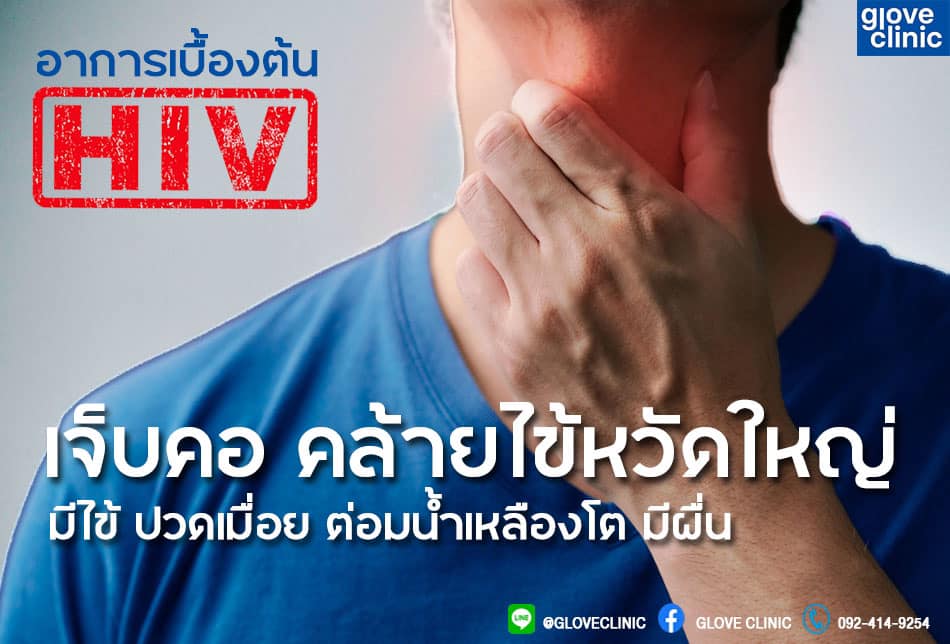294/1 Asia Building (11th Floor), Phyathai, Bangkok
ตรวจ HIV รีวิวความรู้สำหรับการตรวจเอชไอวี (HIV test)
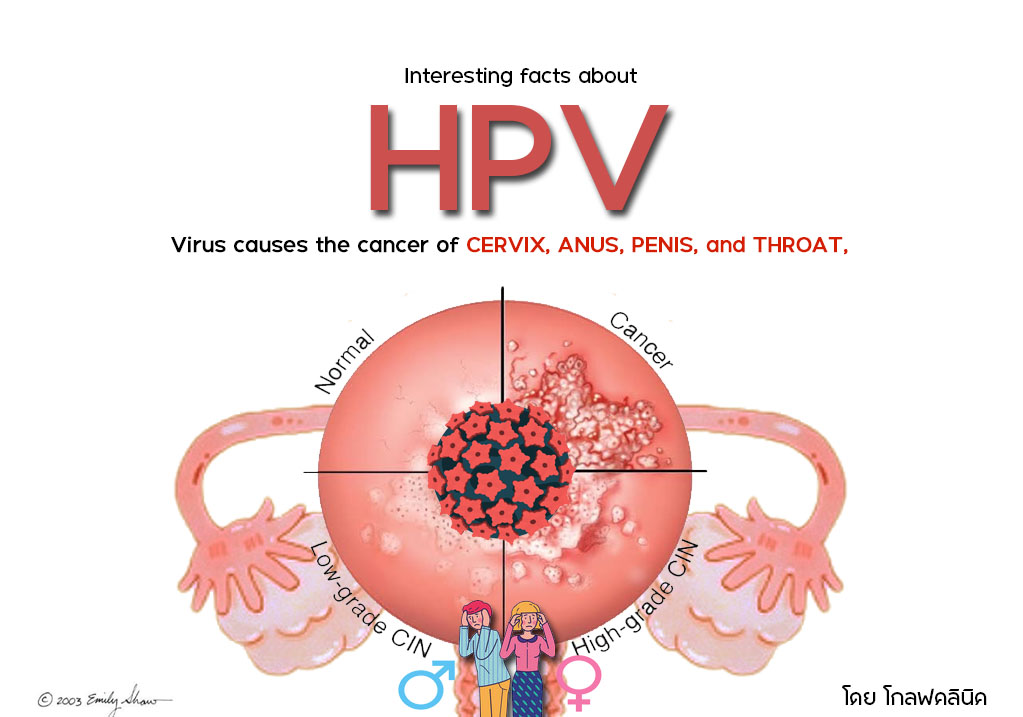
Human papillomavirus (HPV) is the most common sexually transmitted infection worldwide and can lead to various health complications, including genital warts and certain types of cancer. However, there are effective tools in combating this silent threat, and one of them is the HPV vaccine.
Understanding HPV:
HPV refers to a group of viruses that infect the skin and mucous membranes, primarily through sexual contact. Anyone who is sexually active is at risk of infection. There are more than 100 types of HPV, and some strains pose a higher risk of causing cancer and other infections in the genital area.
The importance of HPV vaccination:
1. Preventing cervical cancer: HPV infection is a major cause of cervical cancer. Vaccination significantly reduces the risk of this life-threatening disease, making it crucial for both males and females to receive the vaccine before becoming sexually active.
2. Preventing other cancers: In addition to cervical cancer, HPV can also cause other types of cancer, such as anal, vulvar, vaginal, penile, and oropharyngeal cancer. Vaccination decreases the likelihood of developing these cancers in the future.
3. Preventing genital warts: Certain strains of HPV are highly contagious and can lead to the development of genital warts. Vaccination effectively protects against these strains, reducing the risk of infection and the occurrence of genital warts.
4. Herd immunity: HPV vaccination not only protects individuals who receive the vaccine but also contributes to herd immunity. By reducing the prevalence of HPV in the community, the vaccine helps protect individuals who are not vaccinated or unable to receive the vaccine for medical reasons.
Safety and efficacy of vaccines:
Extensive research and numerous clinical trials have demonstrated the safety and efficacy of the HPV vaccine. This vaccine is recommended for both males and females and is generally administered in two or three doses over several months. Common side effects, if any, are mild and temporary, such as soreness at the injection site.
The HPV vaccine is a crucial tool in preventing health complications related to HPV, including cervical, anal, and genital cancers. By getting vaccinated, individuals not only protect themselves but also contribute to reducing the spread of HPV in the community. For further information about the HPV vaccine and its suitability for you or your loved ones, regardless of gender, it is advisable to consult healthcare professionals.
For those interested or with inquiries about HPV vaccines, you can contact Glove Clinic through their Line Official account (@gloveclinic), inbox them via the Glove Clinic Facebook page, or call 092-414-9254.
This article aims to provide information only and is not intended to replace medical advice. Always consult healthcare providers for personalized advice regarding vaccination and healthcare concerns.
Interesting information about HPV virus:
1. It is now well known that the HPV virus is the main cause of cervical cancer, which is the second most common cancer in women. According to statistical data, in the year 2020, there were approximately 600,000 women worldwide diagnosed with cervical cancer.
2. HPV (Human papillomavirus) can easily be transmitted through physical contact or sexual intercourse. The infected person may not show any symptoms, or they may develop non-cancerous growths called warts, or the virus may cause abnormal cell division leading to cancer. HPV can cause various types of cancer, including cervical cancer, anal cancer, vaginal cancer, and throat cancer.
3. In the 40 years ago (1970-1980), it was believed that the main causes of cervical cancer were hormones, genetics, or the herpes simplex virus type 2. It was not until the German physician and virologist Harald zur Hausen that this belief was changed.
4. In 1984, Harald zur Hausen published a research paper that showed the detection of HPV in cervical cancer patients. This research also helped prove that HPV can cause cancer in both male and female reproductive organs. Although zur Hausen’s work was initially not widely accepted, he eventually received recognition for this discovery and was awarded the Nobel Prize in Medicine in 2008.
5. In 1991, Australian and Chinese researchers Ian Frazer and Jian Zhou conducted a study at the University of Queensland, studying proteins that resemble parts of the HPV virus (virus-like particles or VLPs). This research led to the development of a vaccine to prevent HPV infection.
6. Finally, the HPV vaccine (Gardasil from MSD) was accepted and administered to both girls and boys in 2006, starting in the United States and Australia before being widely used worldwide.
7. The initial HPV vaccine can cover four strains of the virus (6, 11, 16, 18), which are selected from the strains that frequently cause cancer. Statistics show that strains 16 and 18 are found in about 70% of cervical cancer patients and up to 90% of anal cancer patients.
8. In 2014, a new version of the HPV vaccine (Gardasil 9) was introduced, which can cover nine strains. In addition to the original four strains, the pharmaceutical company added five more strains that contribute to the development of cervical cancer (31, 33, 45, 52, 58).
9. In addition to preventing HPV-related cancers, the HPV vaccine has been shown to prevent genital warts, which are also caused by HPV. Therefore, the vaccine can be used to prevent both types of diseases and improve the effectiveness of genital warts treatment.
10. Currently, the recommended age range for HPV vaccination starts at 9 years old and can be given up to 45 years old. This is an expansion from the previous recommendation of up to 26 years old. The vaccine is recommended for both females and males, and it is administered in three doses over a span of 6 months.
If you are interested or have any further questions about the HPV vaccine, you can contact Glove Clinic via Line Official (@gloveclinic), send a message to the Glove Clinic page, or call 092-414-9254.
Make Appointment





Relate content :
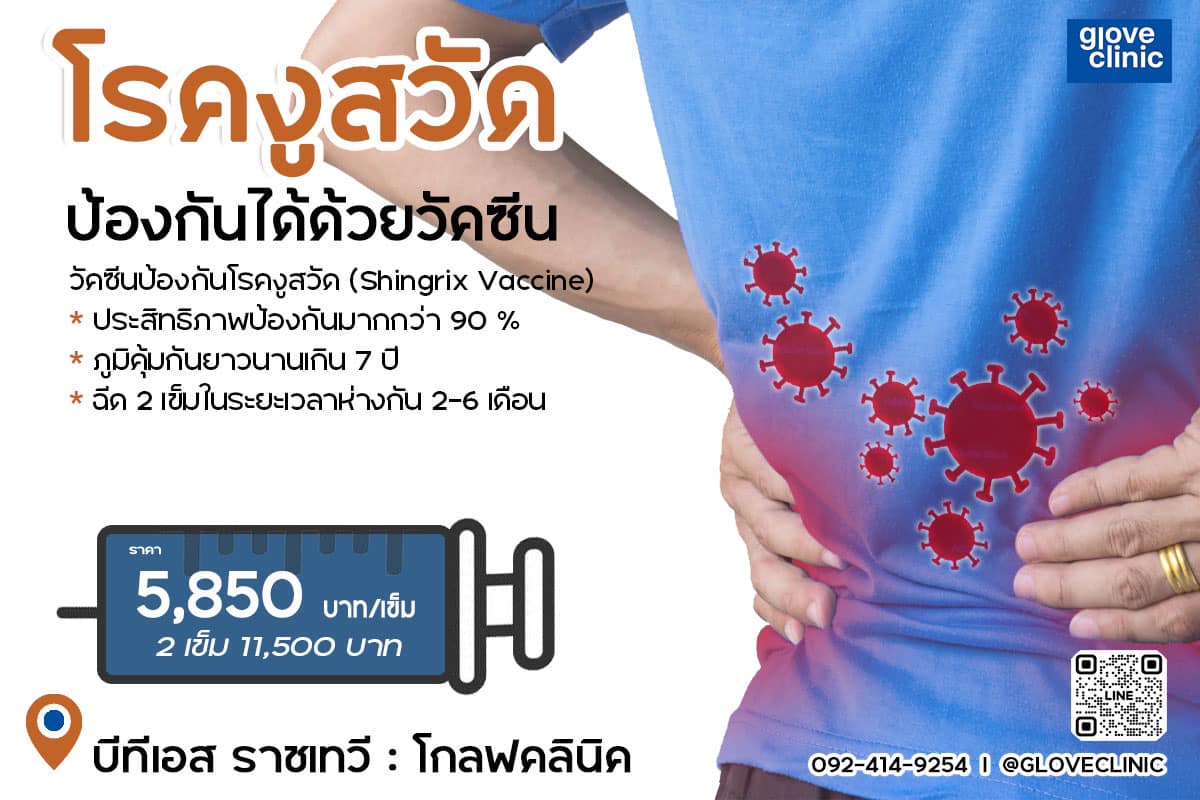
ฉีดวัคซีนงูสวัดที่ glove clinic
งูสวัดคือไวรัสชนิดหนึ่ง (Herpes zoster) ซึ่งเป็นเชื้อไวรัสตัวเดียวกันกับอีสุกอีใส (Varicella zoster) เมื่อเราติดเชื้อไวรัสอีสุกใสในวัยเด็กแล้ว ไวรัสสามารถที่จะหลบซ่อนได้ในร่างกายเป็นเวลานานหลายปี จนกระทั่งเมื่อร่างกายอ่อนแอ ไวรัสนั้นจึงออกมาทำให้เกิดอาการตุ่มน้ำใส ปวดแสบร้อนตามบริเวณที่เส้นประสาทต่าง ๆ ของร่างกายซึ่งเรียกกันว่างูสวัด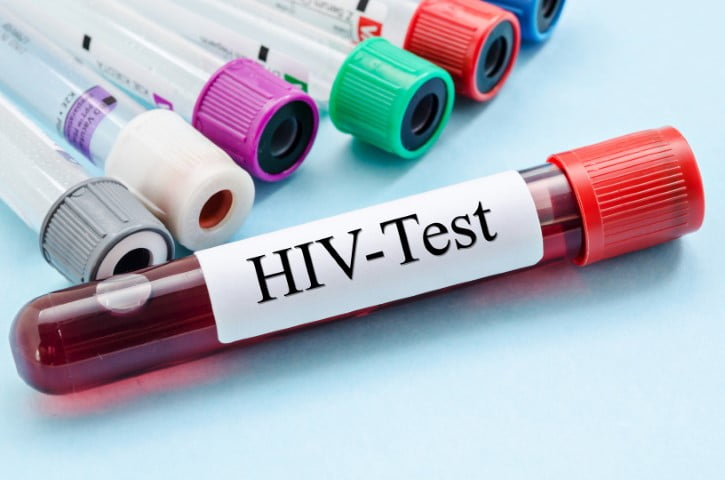
ตรวจ HIV รีวิวความรู้สำหรับการตรวจเอชไอวี (HIV test)
เอชไอวีคือไวรัสที่สามารถติดต่อได้จากการมีเพศสัมพันธ์, การใช้เข็มฉีดยาร่วมกัน, และการติดจากแม่สู่ลูก เมื่อติดเชื้อไวรัส HIV ไวรัสจะทำให้ภูมิคุ้มกันของร่างกายอ่อนแอลง และติดเชื้อโรคอื่น ๆ ได้ง่าย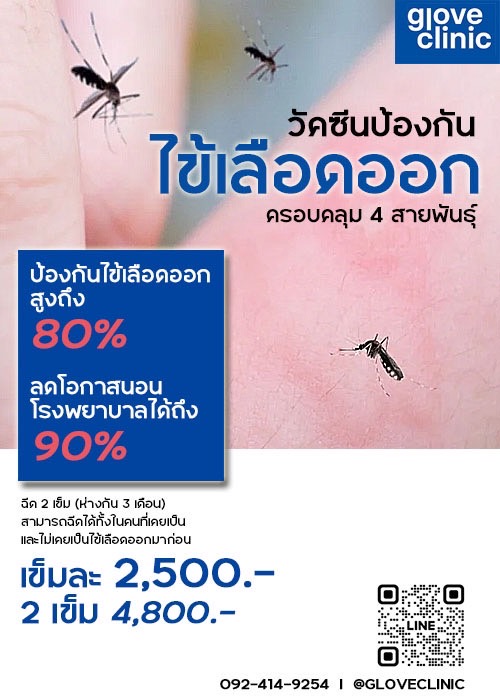
ปีนี้มีคนไข้ป่วยด้วยไข้เลือดออกมากกว่า 2-3 ปีที่ผ่านมา
เนื่องจากว่าผู้คนกลับมาใช้ชีวิตปกติ มีการเดินทาง จึงพบการระบาดมากขึ้น โดยจากสถิติของกรมควบคุมโรคพบว่ามีผู้ป่วยด้วยไข้เลือดออกในประเทศไทยเกินกว่า 60,000 รายไปแล้วทั้งปี 2566 ไข้เลือดออกเป็นโรคที่ก่อให้เกิดความรุนแรงได้ทั้งในเด็กและผู้ใหญ่ โดยเฉพาะอย่างยิ่งในคนที่เป็นซ้ำครั้งที่ 2 จะมีโอกาสเกิดภาวะช๊อคและเสียชีวิตได้มากขึ้น (โอกาสเสียชีวิตอยู่ราว ๆ 1:1,000) วัคซีนไข้เลือดออกรุ่นใหม่สามารถครอบคลุมได้ทั้ง 4 สายพันธุ์และทั้งนี้ผลการศึกษาพบว่าช่วยป้องกันการติดเชื้อได้ถึง 80% และลดโอกาสการนอนโรงพยาบาลได้ถึง 90% นอกจากนี้ยังสามารถฉีดได้ทั้งในคนที่เคยและไม่เคยเป็นไข้เลือดออกมาก่อน (วัคซีนไข้เลือดออกรุ่นเก่าไม่ควรฉีดในคนที่ยังไม่เคยเป็นไข้เลือดออก) สอบถามข้อมูลเพิ่มเติมเรื่องวัคซีนไข้เลือดออกได้ที่ 092-414-9254, Line Official @gloveclinic (มีแอดข้างหน้า)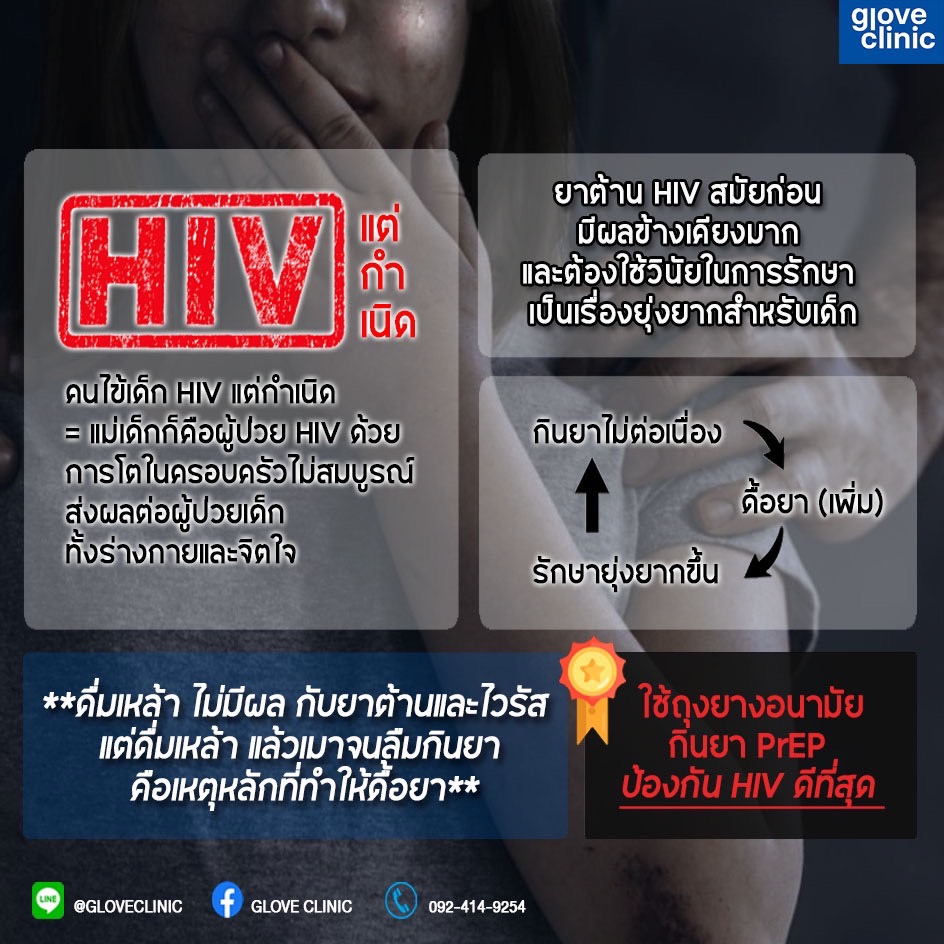
HIV แต่กำเนิด
ประเด็นร้อนที่ได้รับการพูดถึงอย่างมากในโลกออนไลน์ที่มีข้อความของนักศึกษาหญิงเปิดเผยว่าตัวเธอเองได้มีเพศสัมพันธ์แบบ one night stand เวลาไปเที่ยวกลางคืนบ่อยครั้ง และได้บอกความจริงว่าเธอเองมีเชื้อ HIV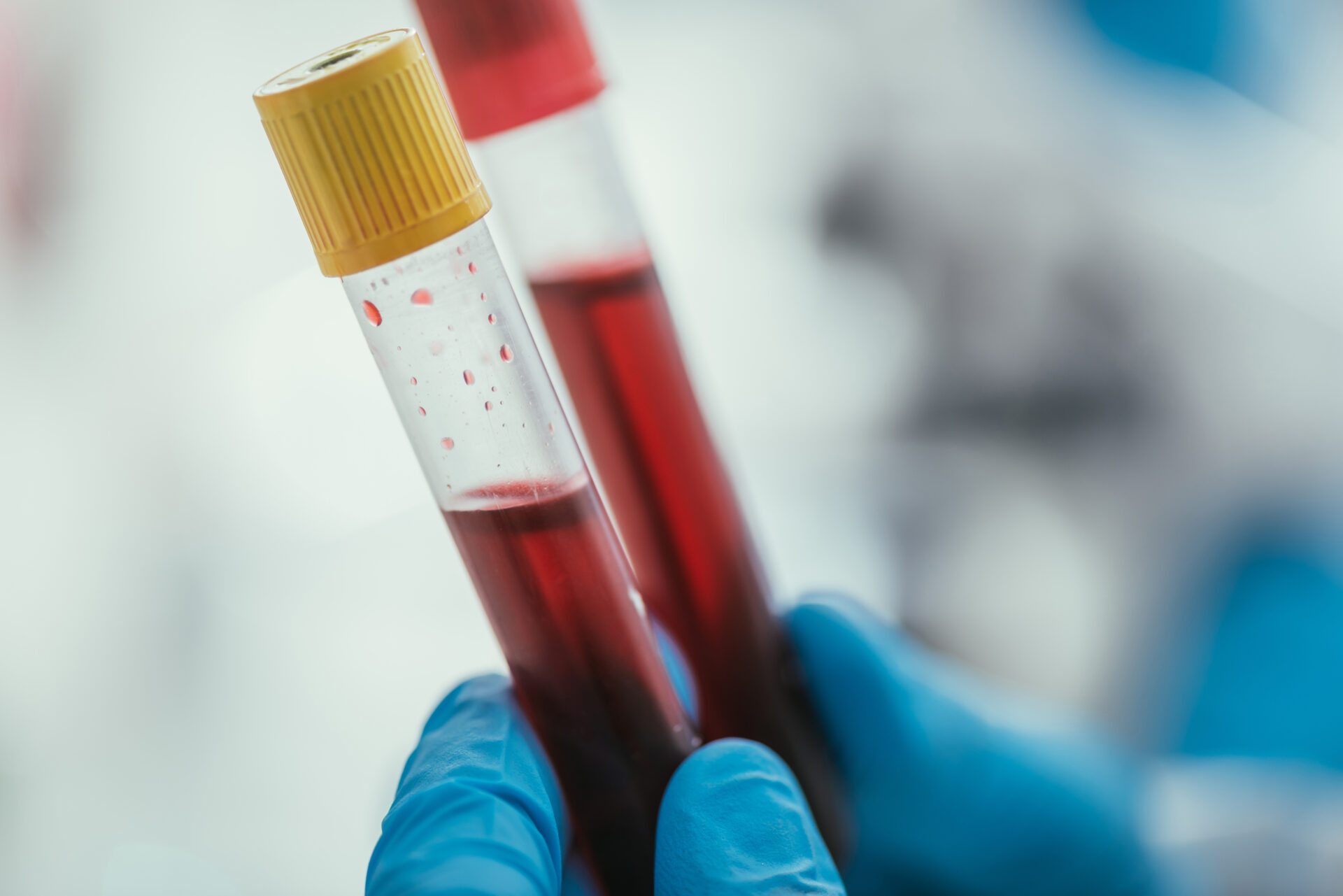
อาการของเอดส์เป็นอย่างไร ทำความรู้จักกับเอดส์
เอดส์ คืออะไร แท้จริงแล้วเอดส์ไม่ใช่โรค หากแต่คือระยะสุดท้ายของการติดเชื้อ HIV ซึ่ง HIV นั่นเองคือไวรัสที่ทำลายภูมิคุ้มกันของร่างกาย โดยเซลล์หลักที่ถูกเล่นงานโดยไวรัสก็คือเม็ดเลือดขาว CD4 ซึ่งเป็นเซลล์ที่บัญชาการระบบภูมิคุ้มกันของร่างกาย ซึ่งเอดส์ในภาษาอังกฤษก็คือ AIDS ย่อมาจาก Acquired immunodeficiency syndrome กำเนิดของการเรียกชื่อว่าเอดส์ เดือนมิถุนายน ค.ศ. 1981 ในวารสารของกรมควบคุมโรค ประเทศสหรัฐอเมริกาได้รายงานว่ามีเกย์หนุ่ม 5 คนมีอาการปอดอักเสบจากเชื้อรา และได้รับการรักษาในโรงพยาบาลที่ Los Angeles โดย 2 รายเสียชีวิต และนอกจากนี้ทั้ง 5 คนยังพบการติดเชื้อไวรัส CMV และมีเชื้อราในช่องปากร่วมด้วย ซึ่งเชื้อต่าง ๆ ที่เล่ามานั้นมักเจอในผู้ป่วยที่มีภูมิคุ้มกันบกพร่อง ในขณะนั้นโลกยังไม่ได้รู้จักกับไวรัส HIV ว่าเป็นสาเหตุตั้งต้นของสิ่งที่เกิดขึ้น การเรียกภาวะนี้ในยุคแรกจึงได้เรียกว่า AIDS หรือ “เอดส์” ซึ่งย่อมาจาก acquired immunodeficiency syndrome อาการของเอดส์แตกต่างกับ HIV ยังไง เอดส์คือชื่อระยะที่ 3…